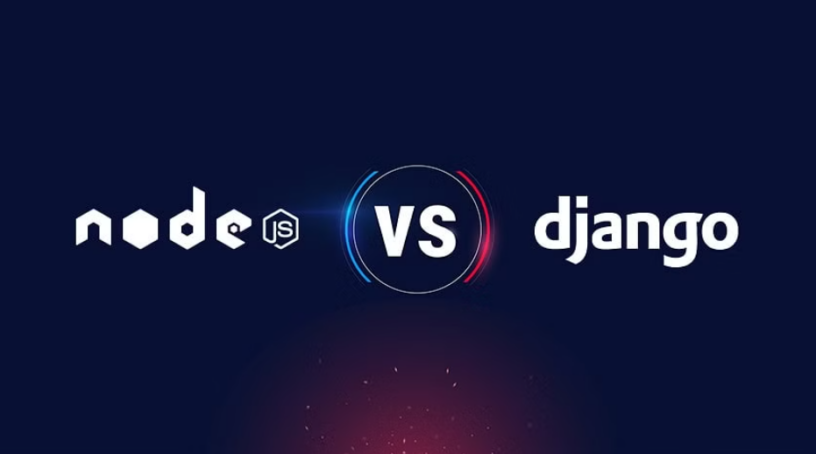As developers ponder their backend framework options in 2025, two names frequently surface: Django and Node.js. Deciding between them hinges on numerous factors, including project needs, existing technology stack, and personal proficiency. Each framework boasts unique strengths and facilitates different development methodologies. By delving into their capabilities, performance, and ecosystem support, developers can make informed decisions that align with their project goals and future trends.
Understanding Django and Node.js
What is Django?
Django is a high-level web framework based in Python, renowned for its “batteries-included” philosophy. This design principle ensures that Django offers extensive built-in functionalities, such as robust authentication, an Object-Relational Mapping (ORM) system, and a powerful admin interface. By leveraging these features, developers can expedite the process of building secure and maintainable web applications. Adhering to the Model-View-Controller (MVC) architectural pattern, Django encourages the creation of clean and efficient code. Its strong preference in scenarios demanding reliable backend solutions makes it a popular choice among developers aiming for speed without compromising on security or maintainability.
What is Node.js?
Node.js is a JavaScript runtime built on Chrome’s V8 JavaScript engine, adept at executing JavaScript code server-side. Characterized by its event-driven, non-blocking I/O model, Node.js excels in creating fast and scalable network applications. Its architecture allows the handling of numerous concurrent connections efficiently, making it a preferred choice for real-time applications like chat apps and online gaming platforms. As developers pivot towards microservices architecture and real-time web services, Node.js stands out for its performance in handling asynchronous operations. Despite its frequent association with frameworks, Node.js itself is the runtime environment empowering a suite of innovative applications.
Key features and capabilities
Strengths of Django in backend development
Django excels in backend development owing to its comprehensive suite of built-in tools and robust security features. Its ORM simplifies database manipulation, offering a seamless interface for developers to interact with relational databases without writing SQL queries. Automatic admin interface generation provides a user-friendly backend management system, ideal for rapid development cycles and quick prototype iterations.
Moreover, Django is comprehensive in its security measures, offering out-of-the-box protection against common vulnerabilities like SQL injection and cross-site scripting. This makes it a favorable choice for projects where data protection is paramount.
The framework’s emphasis on the DRY (Don’t Repeat Yourself) principle further enhances its efficiency, reducing redundancy and fostering reusable code. Overall, Django is suited for projects requiring rapid development, structured data handling, and high security, such as financial applications or enterprise-grade software.
Notable advantages of Node.js
Node.js offers several compelling advantages that make it a standout choice for backend development. One of its primary strengths is the use of JavaScript across both front and backend, allowing for a unified development stack. This unification enables developers to write the same language for client and server-side scripts, simplifying the development process and reducing the complexity of managing separate languages.
Another key advantage is Node.js’s non-blocking, event-driven architecture, which allows it to handle a large number of concurrent connections with high throughput. This makes it particularly effective for real-time applications, such as chat applications or live streaming services, where maintaining a smooth user experience under heavy loads is crucial.
Node.js also boasts a vast and active ecosystem through the Node Package Manager (NPM), which offers thousands of modules and libraries, expediting development by providing pre-built solutions to common challenges. The vibrant community contributes to its rapid evolution, ensuring the framework remains on the cutting edge of technology.
Last but not least, companies like Netflix and PayPal have leveraged Node.js to significantly enhance performance and scalability, often achieving remarkable improvements in processing speed and system efficiency.
A Quick Comparison Table
| Feature/Aspect | Django | Node.js |
| Language | Python | JavaScript |
| Architecture | MVC (Model-View-Controller) | Event-driven, non-blocking I/O |
| Built-in Features | Comprehensive (admin interface, ORM, auth) | Minimal, with a focus on modularity and flexibility |
| Scalability | Vertical, suitable for complex queries | Horizontal, excels in handling numerous connections |
| Security | Strong built-in protections against web threats | Requires manual setup for security best practices |
| Community Support | Mature and well-documented, strong support | Rapidly growing, very active with frequent updates |
| Ideal For | Secure, data-driven applications | Real-time applications, streaming services |
Ecosystem and community support
The vibrant Django community
Django’s community is a cornerstone of its enduring success and widespread adoption. Established in 2005, this community has grown significantly, bolstered by a wide array of developers and contributors dedicated to enhancing Django’s functionality and support. The wealth of resources available—such as comprehensive documentation, extensive tutorials, and active discussion forums—ensures that developers, from beginners to veterans, can find the guidance they need promptly.
Furthermore, DjangoCon and various meetups held worldwide facilitate knowledge sharing and networking among those using the framework, fostering a collaborative spirit that propels innovation and improvement. This robust support system means that developers often resolve issues quickly by tapping into community insights, making Django an attractive option for businesses and individual developers alike.
Growing Node.js ecosystem
Node.js boasts a rapidly expanding ecosystem that has become a formidable force in the development world. Central to this growth is the Node Package Manager (NPM), which houses over 1.3 million packages, enabling developers to accelerate their development processes by leveraging pre-crafted solutions. This vast repository ensures that nearly any functionality can be implemented swiftly, ranging from simple utility functions to complex integrations.
The Node.js community, composed of passionate developers and large corporations alike, actively contributes to its evolution through frequent updates and the introduction of innovative tools. Industry giants such as Netflix, LinkedIn, and PayPal’s adoption of Node.js further validates its capabilities and reliability in production environments.
In addition to the technical resources, numerous conferences, webinars, and local meetups fuel continued learning and collaboration, ensuring that knowledge and best practices disseminate throughout the community efficiently. This culture of continuous improvement and shared learning makes Node.js a powerful choice for any developer seeking cutting-edge solutions.
Performance and scalability insights
Real-world performance metrics
In real-world scenarios, performance metrics provide critical insights into how Django and Node.js hold up under practical conditions. Node.js is known for its outstanding capability to handle numerous concurrent connections due to its non-blocking, event-driven architecture. This is particularly beneficial for I/O-heavy applications like streaming services or social networks, where performance is paramount.
Django, while traditionally not recognized for handling high concurrency, excels in CPU-bound tasks and scenarios requiring complex queries or data manipulations. Its built-in ORM and templating engine contribute to efficient query management and rapid data processing in database-heavy applications.
Consider the following requests per second under typical load conditions:
| Framework | Plain Text | JSON | DB Query |
| Litestar | 50,000 | 45,000 | 15,000 |
| FastAPI | 45,000 | 40,000 | 13,000 |
| Starlette | 52,000 | 47,000 | 14,000 |
These numbers underscore Node.js’s ability to maximize throughput and minimize latency in high-traffic scenarios. In contrast, Django projects tend to shine when the emphasis is on maintaining clean and secure data handlings.
Scalability considerations for each framework
When evaluating scalability, both Django and Node.js present distinct characteristics that cater to different project needs. Node.js, with its non-blocking I/O and event-driven model, inherently supports horizontal scaling. This allows developers to easily deploy multiple instances across different servers, effectively distributing the load and accommodating increasing numbers of simultaneous connections. This makes Node.js particularly suited for applications that expect a high volume of user interactions, such as social media platforms and live streaming services.
Django’s scalability, on the other hand, often follows a vertical scaling approach. Its strong dependency on the underlying database structures and built-in ORM makes it adept at handling complex data operations. While not as straightforward in handling concurrent connections as Node.js, Django projects can still be scaled effectively by optimizing database queries, utilizing caching mechanisms, and employing load balancers to evenly distribute traffic.
Both frameworks can be scaled successfully, but the choice heavily depends on the nature of your application and traffic expectations. Node.js offers flexibility and efficiency for applications with a fluctuating number of connections, whereas Django provides robust support for applications with complex data processing needs.
Developer experience and learning curve
Ease of learning with Django
Django is often lauded for its accessibility, especially for developers familiar with Python. Its structured approach, paired with comprehensive and meticulous documentation, makes Django an appealing choice for beginners and seasoned developers alike. The framework’s adherence to the “batteries-included” philosophy means that many common functionalities are available out-of-the-box, reducing the learning curve by minimizing the need for third-party plugins or intricate configurations.
Django’s Model-View-Template (MVT) pattern exemplifies clean and organized code structure, facilitating easy understanding and maintenance. This organizational clarity, combined with a wealth of tutorials, community forums, and official guides, ensures that new developers can quickly grasp the essentials and move onto more complex projects.
Another notable aspect is the community-driven learning resources, including courses, bootcamps, and meetups, which provide an engaging learning environment and encourage collaboration. For any Python developer aiming to transition into web development, Django offers a seamless learning experience that aligns well with Python’s philosophy and syntax.
Navigating the Node.js learning path
Embarking on the Node.js learning path requires a strong foundation in JavaScript, as the runtime environment extends JavaScript’s capabilities beyond the browser. For developers already acquainted with JavaScript, Node.js provides an opportunity to apply this knowledge to backend development, streamlining the use of a single language across both the client and server sides of applications.
The Node.js community supports a plethora of educational resources tailored to various skill levels. From the official Node.js documentation, which offers a detailed overview of its API and libraries, to comprehensive online courses found on platforms like Udemy and Coursera, learners can find materials suited to their pace and proficiency. Many courses incorporate interactive video tutorials, quizzes, and practical assignments, fostering an engaging learning experience.
Additionally, online forums such as the Node.js community on Reddit and other discussion platforms provide a collaborative space to seek advice, share experiences, and connect with other learners and experienced developers. The lively nature of these communities ensures that help is readily available, especially when tackling asynchronous programming concepts and event-driven architecture, which might pose challenges for newcomers.
Ultimately, Node.js is perfect for developers endeavoring to harness the full potential of JavaScript, particularly those interested in creating data-intensive real-time applications.
Cost implications
How much does developing with Django cost?
Developing with Django offers a cost-effective solution, particularly for businesses keen on maintaining a tight budget. As an open-source framework, Django is completely free to use, which significantly reduces initial expenses associated with acquiring software licenses. However, costs may arise from other areas such as hosting, additional plugins, or scalability solutions as the project evolves.
Django projects typically incur costs related to server hosting, which could range from budget-friendly options to more robust solutions like AWS or Google Cloud for larger applications. If you opt for the paid version of Django, which includes support and security updates, costs can increase but also contribute to maintaining application integrity and safety. Additionally, development costs also depend on project complexity and hiring skilled developers familiar with the Django ecosystem.
Overall, Django’s cost structure is flexible, making it a viable option for startups aiming for rapid development and established businesses seeking robust, scalable solutions.
Budget considerations for Node.js projects
When planning a Node.js project, several budget considerations can impact your overall costs. Like Django, Node.js itself is free and open-source, eliminating any initial software licensing fees. The primary cost factors revolve around infrastructure, maintenance, and developer expertise, particularly due to Node.js’s asynchronous nature and extensive use in real-time applications.
Hosting services for Node.js projects can vary widely based on the chosen provider and the application’s scale. Nodes.js’s efficient resource management allows for performance at a lower cost, as seen with scalable providers like DigitalOcean or AWS, which offer competitive pricing tailored to different project needs. Costs also incorporate potential API and microservice integrations, which may necessitate additional investment in third-party services or higher-level compute instances.
Another crucial factor is the development team. While finding developers proficient in JavaScript is common, specific expertise in managing Node.js’s non-blocking I/O operations might demand premium compensation.
Ultimately, Node.js offers a flexible budget framework, accommodating leaner startups and more substantial corporate projects, with cost-effectiveness improved through careful provider selection and resource allocation.
Security panorama
Security measures in Django
Django prioritizes security, making it a preferred choice for developers focused on safeguarding applications from common web vulnerabilities. The framework includes built-in protections against SQL injection, cross-site scripting (XSS), cross-site request forgery (CSRF), and clickjacking. These features help developers build secure applications without needing to implement extensive security measures manually.
Django’s ORM automatically escapes SQL queries, which prevents malicious actions through SQL injection, while its templating engine escapes HTML by default to mitigate XSS risks. Furthermore, Django’s security middleware includes CSRF protection, ensuring that unauthorized actions cannot be executed on behalf of users.
Django regularly releases updates and patches to address new security threats, supported by an active community vigilantly monitoring and resolving potential vulnerabilities. Its comprehensive documentation includes guidelines and best practices for writing secure code, thereby reducing security risks significantly in applications developed using Django.
For industries such as finance and healthcare, where compliance and data confidentiality are paramount, Django’s security-first design ensures safe and robust web application deployment.
Ensuring secure applications with Node.js
Node.js provides a robust environment for building secure applications, but it requires deliberate application of security best practices to mitigate potential vulnerabilities. Since Node.js handles JavaScript code execution on the server side, maintaining updated and secure code bases becomes crucial, especially when managing dependencies through the Node Package Manager (NPM).
To ensure security, developers should frequently audit dependencies using tools like npm audit or third-party services such as Snyk. These tools can identify outdated packages and known vulnerabilities across dependencies, allowing for prompt updates and fixes. Adopting security headers, such as Helmet.js, is another effective strategy, helping to protect your application from common web threats by setting various HTTP headers.
Implementing secure coding standards plays a vital role in mitigating risks like cross-site scripting (XSS) and SQL injections. Node.js does not inherently escape input, so validating and sanitizing user inputs is critical to prevent injection attacks.
Furthermore, employing modules like bcrypt.js can secure password storage through robust hashing techniques, and JSON Web Tokens (JWT) can authenticate users securely. For sensitive applications, securing data with SSL/TLS encryption should be prioritized to safeguard communications from eavesdropping and tampering.
Node.js, when coupled with diligent attention to security practices and active community support, can provide a resilient foundation forcreating secure and performant applications.
Selecting the right framework for your project
Key decision making factors
Choosing the right framework for your backend development project in 2025 requires a careful assessment of several key decision-making factors tailored to your specific needs:
- Performance requirements: Evaluate your application’s throughput and latency needs. Node.js excels in real-time and I/O-bound applications, while Django’s strength lies in data-heavy, CPU-bound processing.
- Team expertise: Consider the technical background of your team. Teams proficient in Python might gravitate towards Django, whereas those with JavaScript expertise could find Node.js more intuitive.
- Time to market: If quick deployment is crucial, Django’s comprehensive toolkit facilitates rapid development with its built-in features. Node.js offers speed in adopting a microservices architecture.
- Scalability needs: Assess your growth trajectory. Node.js benefits environments with high concurrency demands, while Django supports projects demanding significant data management capabilities.
- Budget constraints: Consider your infrastructure and development cost limits. Both frameworks are open-source, but costs can accrue based on required resources and hosting solutions.
Long-term considerations include evaluating the community health and corporate backing of each framework, assessing upgrade and migration paths, and calculating long-term maintenance costs to ensure sustained support and evolution of the technology stack.











Leave a Reply